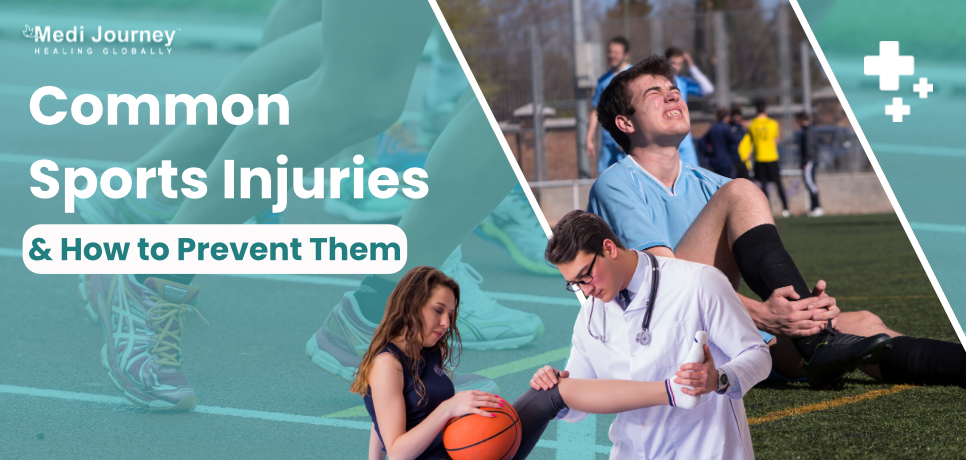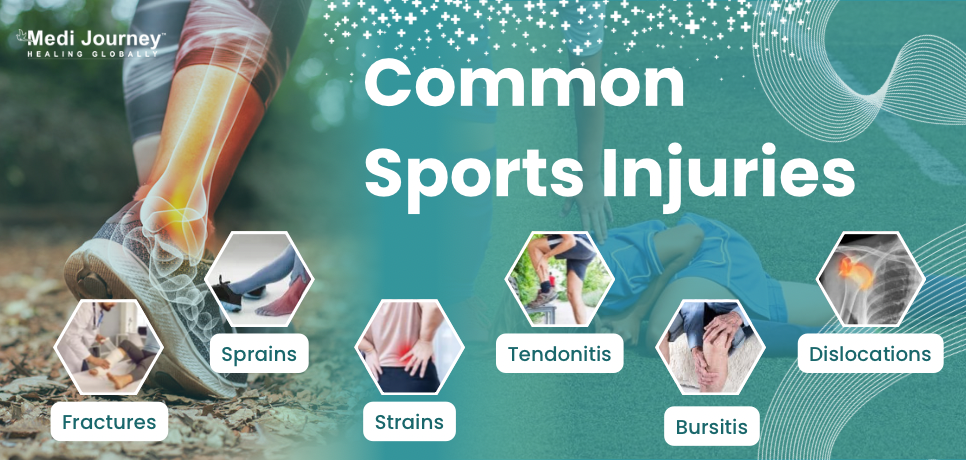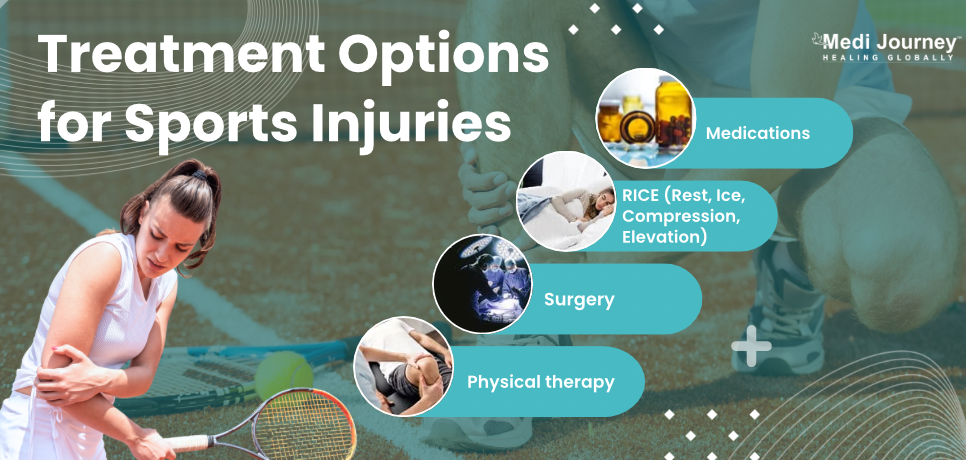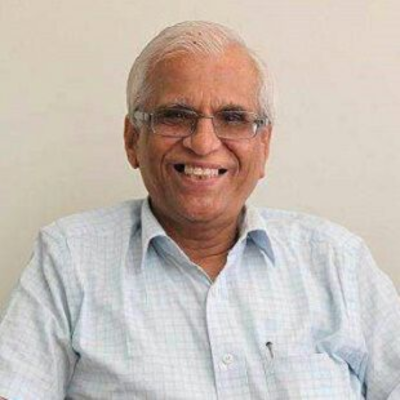The Role of Government Initiatives in Promoting Medical Tourism in India
 02 April,2025
Read More
02 April,2025
Read More
Enquire now in case of any assistance needed

You know that exhilarating feeling after a great workout? Pure accomplishment, right? But sometimes, that push for that extra rep or that final sprint can leave you feeling a little off. Sprains, fractures, bruises, concussions, maybe even a dull pain – yep, those are the not-so-fun reminders that our bodies have limits.
Listen, we've all been there. Injuries are a bummer whether you're a seasoned athlete or enjoy weekend sports. But don't panic! This guide is here to support you on the road to recovery. We'll break down common sports injuries, equip you with prevention tips, and even guide you about when to visit a specialist.
Read this blog further, as this is your one-stop solution for returning to feeling strong and ready to dominate (safely, of course!) that next workout or match.
Sports injury refers to injuries that frequently occur during sports or exercise but are not limited to athletes. For example, painters can get shoulder injuries, factory workers can get tennis elbow, and gardeners can develop tendinitis, even if they do not participate in sports. Ultimately, sports injuries refer to the trauma that occurs in individuals who have an active lifestyle.
Sports injuries are common in people who are out of shape, start exercising or playing sports without warming up, and don't wear proper protective equipment when on the ground, in the gym, or at work.
According to the reports of Stanford Children's Health, 3.5 million children suffer from sports injuries each year. Sports injuries can be classified as acute injuries and chronic injuries.

Acute and chronic or overuse sports injuries are common in athletes and people having certain occupations. Fractures, sprains, strains, tendonitis, bursitis, and dislocations are a few examples of types of injuries musculoskeletal injuries.
Common sports injuries based on the body part involved are –
Sports injuries of the shoulder are common and can be caused by different factors.
Common elbow injuries a sportsperson can get include tennis elbow, golfer's elbow, little league elbow, and ulnar collateral ligament injury.
The knee is another body joint that is susceptible to sports injuries. Common ones include –
Injuries such as shin splints, groin pull, and hamstring strain are a few common leg injuries.
Ankles are also susceptible to sports-related injuries, with sprain and Achilles tendonitis being the most common ones.
Sports injuries can have a variety of symptoms, depending on the type of injury and its severity. Chronic injuries show symptoms gradually, whereas acute injuries have a quick onset of symptoms. Some of the common signs of sports injuries are –

Advanced orthopedic hospitals can handle complex trauma cases, including sports injuries. These hospitals provide the latest technologies for managing injuries resulting from sports and other activities. Some of the standard treatment modalities used for sports injuries are –
The RICE method is your first line of defense for minor injuries like sprains and strains. RICE stands for:
Once the initial inflammation subsides, your doctor might recommend further treatments to promote healing and improve function.
For severe injuries like ligament tears or fractures, the doctors recommend more advanced treatments. These include –
Playing sports is a fantastic way of staying active, having fun, and challenging yourself. But with all that exertion comes the risk of injury. The relieving news is that many sports injuries are preventable! Following some key strategies can significantly reduce your chances of getting sidelined.
Even though minor sports injuries can be managed at home, there are few instances when seeking advice from medical experts becomes necessary.
Orthopedic doctors manage sports-related injuries. Highly specialized hospitals use a multidisciplinary approach to treating sports injuries. The healthcare team at these hospitals consists of orthopedic surgeons, physical therapists, occupational therapists, and sports medicine specialists.
You should visit an orthopedic doctor if –
Sports are a fantastic way to challenge yourself, have fun, and stay active. But with all that exertion comes the risk of injury. The good news is that following the tips in this guide can significantly reduce your chances of getting sidelined. Remember, prevention is key! Make proper warm-up, cool-down, and stretching routines a habit. Listen to your body, prioritize rest and recovery, and don't hesitate to seek professional help when needed. With a bit of preparation and awareness, you can keep yourself in the game and enjoy the many benefits of sports
Doctor of Pharmacy
Dr. Deepanshu Siwach is a skilled clinical pharmacist with a Doctor of Pharmacy degree.?He has 4+?years of experience and has worked with thousands of patients. He has been associated with some of the top hospitals, such as Artemis Gurgaon.
Director
Orthopedic and Joint Replacement Surgeon
Aakash Healthcare Super Speciality Hospital, Dwarka, New Delhi
Dr. Aashish Chaudhry is amongst the best Orthopedic Surgeons, with over 23 years of experience....
Senior Consultant
Medical Oncologist
Nanavati-Max Super Speciality Hospital, Mumbai
Book Appointment WhatsApp UsSenior Director
Gynecologist and Obstetrician, IVF Specialist
Max Super Speciality Hospital, Shalimar Bagh, New Delhi
Book Appointment WhatsApp UsSenior Director
Gynecologist and Obstetrician, IVF Specialist
Max Smart Super Speciality Hospital, Saket, New Delhi
Book Appointment WhatsApp UsSenior Director
Gynecologist and Obstetrician
Max Smart Super Speciality Hospital, Saket, New Delhi
Book Appointment WhatsApp UsSenior Director
Gynecologist and Obstetrician
Max Smart Super Speciality Hospital, Saket, New Delhi
Book Appointment WhatsApp UsSenior Director
Gynecologist and Obstetrician
Max Smart Super Speciality Hospital, Saket, New Delhi
Book Appointment WhatsApp UsFill up the form and get assured assitance within 24 hrs!
The Art of Effective Communication
 24 January,2025
Read More
24 January,2025
Read More
Trusted by Patients
"I am Asim from Bangladesh and was looking for treatment in India for neuro. I visited many websites to get the complete information regarding the treatment but I was not satisfied as I was getting confused. In the meanwhile, one of my friends suggested I seek help from Medi Journey as he experienced his medical journey very smoothly and was satisfied with it. They have filtered the top 10 doctors as per experience, the success rate of surgery & profile, so it helps us to choose the best treatment in India. "
"For my knee surgery, Medi Journey guided me to BLK Hospital where I received exceptional care. The team's support and the expertise at BLK Hospital exceeded my expectations. Thank you Medi Journey for making my medical journey stress-free. "
"I came from Iraq for my granddaughter's eye surgery in India facilitated by Medi Journey, due to critical cases they advised us to get a second opinion from the different hospitals before going to surgery. Finally, we went to Fortis Escort Hospital, which helped us to get more confidence for diagnosis. Fortis Escort Hospital has the best eye surgeon team with the latest instruments. Thanks to all team members for providing a high-quality treatment in India at an affordable cost. "
"I came for my hair transplant in India, before coming I was so confused about choosing the best clinic and surgeon for me. But thanks to God one of my friends had a hair transplant in India through Medi Journey. He recommended me to go with them. I am completely happy with my experience with them. They were always very fast in their responses to me. the success rate of my hair transplant surgery is 100%."
"Artemis Hospital, suggested by Medi Journey, turned out to be a great choice for my treatment. The personalized assistance and medical care were exceptional. I'm grateful to Medi Journey for guiding me to a hospital that perfectly matched my needs. Highly recommended! "
"I came from Afghanistan for my treatment in India at Jaypee Hospital, Noida. I had a fantastic experience with Medi Journey. Kudos to them for their incredible support during my medical journey. They not only took care of all the logistics but also connected me with a fantastic healthcare team. Efficient, caring, and highly recommended for a hassle-free medical tourism experience."
"I am Adam from Kano, Nigeria, one of my friends from Nigeria was facilitated by Medi Journey, and he recommended us to go with them. I sent my all reports to them and within 48 hours they reverted with 4 options from different hospitals. They helped me to get a Visa letter from the hospital, arrange pick-up from the airport, and book a hotel for me. Their team is very honest and throughout our stay in India they are with us they are caring for us like his family members. BLK Hospital is the best hospital in India with a top surgical oncologist surgeon team, a very advanced OT, and a Radiotherapy department. I wish more success to Medi Journey. "
"Great experience at the Max Hospital for my spine surgery and was successfully done. I thank my neurosurgeon and his entire team. I recommended all of my country's people to Medi Journey for treatment in India, they choose the best hospital, the best doctors, and the best cost for patients."
"I came to India from Dhaka, Bangladesh for my father-in-law's cardiac surgery at Fortis Hospital. I was confused about choosing the best surgeon for him before coming, but their team helped me to choose the best hospital and best cardiac surgeon in India with very good cost and 100% success rate of surgery. I am very happy with the services, really they make my journey so comfortable that make me feel at home. Thanks again and I like people to choose "Medi Journey" as your travel guide. "
"I am Mohammad from Bangladesh came to India for my general health checkup. Medi Journey offers me the complete package including Pick-up from the airport, hotel services, and 24-hour assistance. They guide you to choose the best hospital in India, the best cost of treatment with top-most doctors and give you complete information about hotel booking, and pick-up from the airport before coming to India They have the best team to help. Always choose Medi Journey for your treatment in India."





